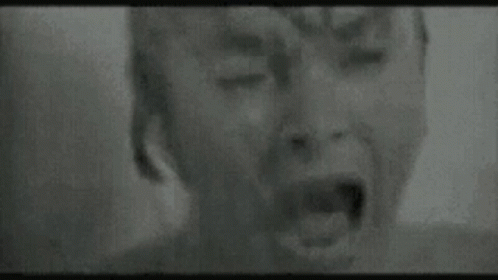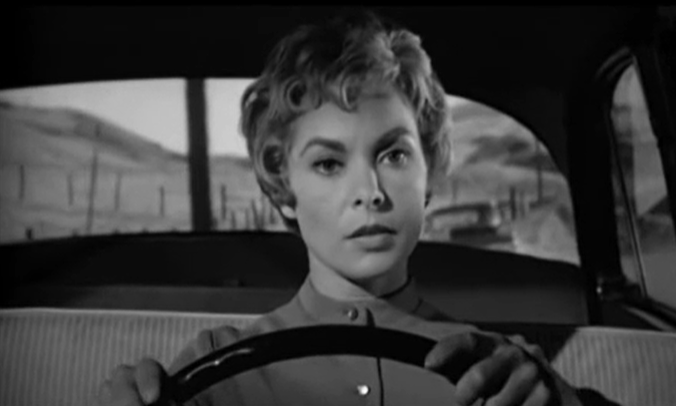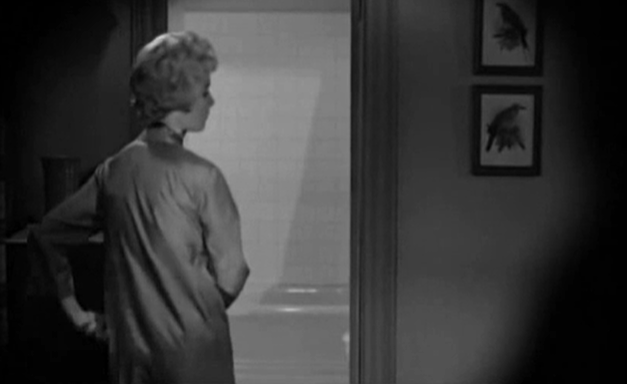Classic Movie Review: Psycho (1960) from Alfred Hitchcock

Technical data:
Director: Alfred Hitchcock
Production: Alfred Hitchcock
Screenplay: Joseph Stefano
Main actors: Anthony Perkins, Janet Leigh, Vera Miles, Martin Balsam
based on: Psycho from Robert Bloch
Overview (from Rotten Tomatoes): Phoenix secretary Marion Crane (Janet Leigh), on the lam after stealing $40,000 from her employer in order to run away with her boyfriend, Sam Loomis (John Gavin), is overcome by exhaustion during a heavy rainstorm. Traveling on the back roads to avoid the police, she stops for the night at the ramshackle Bates Motel and meets the polite but highly strung proprietor Norman Bates (Anthony Perkins), a young man with an interest in taxidermy and a difficult relationship with his mother.
Review:
WARNING: The following review contains Spoilers.
This is probably the best known and most acclaimed film in Hitchcock's filmography, and deservedly so for many reasons.
Let's start with everything related to the look and shooting. The film is shot in black and white, which adds a lot of mystery and is reminiscent of old horror films and allows for scenes of blood and violence to be shown without extreme censorship. Another thing that stands out is the filming, which has aerial shots:

There are also shots of Marione driving:

The voyeuristic shots:


And many other uses of the camera, which, although several are simple, add a whole layer of mystery and tension.
Of note in the artistic section are the sets, each carefully selected to go with the scene, from the hotel room in Phoenix where the first scene of the film takes place, to the entire Bates Motel. Also, the meticulousness in the details that is customary in Hitchcock. A great example is the shower head, which is modified so that no water falls on the camera:
Now let's move on to the plot, which is quite innovative for the time. First of all, Norman Bates' relationship with his mother, which is quite bad since he was a child, leading to the murder of the latter by Norman; with this Hitchcock breaks the scheme that the family is always a safe environment. There is also all the psychology applied, ranging from Norman's nervousness and submissiveness on the part of his mother, caused by childhood trauma, but undoubtedly what most affects this is in the mental illness of the guy, who, having lived locked up all his life in his house, reality begins to distort, to the point where, when he murders his mother, part of Norman's brain becomes his mother's, since, although he almost hated her, he also felt a strange devotion to her for being the figure who always dominated him. Another point to take into account is the use of taboos, since it was not common at that time to see a half-naked woman or taking a shower, brutal murders done by a man dressed as a woman or the half-decomposed corpse of an old woman. As a curiosity, this is the first film that dared to show a toilet on screen:

Another great element that makes this film stand out is the music, composed by Bernard Herrmann, who usually uses fretted strings, always uses high and squeaky tones, with a choppy rhythm, which increases the feeling of tension.
But if there is something in this movie that has traced the history and that marked a before and after in the cinema, it is undoubtedly the scene in the shower, which deserves a separate point. It all starts with Marion throwing some papers into a toilet, to then enter the shower where (as I said before) the pear is modified so that it does not wet the camera. For a little less than a minute she shakes her body, and there is no music playing, so we know that at some point something is going to happen. Suspicions are confirmed when a shadow slowly approaches, then the curtain opens and we see a woman holding a knife, which is not Antony Perkins in disguise, but an actress who had to put on several layers of makeup so that her face would not show. Subsequently, Marion lets out a scream and the piece of music known as "The Murder" enters, with a shrill, screeching sound. Then the woman begins to stab Marion, while the camera changes angles rapidly. Although there are only nine stab wounds, they seem to be more because of the intensity of the music, so that finally, Marion falls dead and the blood (which is actually chocolate syrup) is shown running down the siphon of the bathtub. Then the killer leaves and the camera spirals in on Marion's eye. Later Norman Bates arrives and is surprised to find the corpse and proceeds to clean up the crime scene, process that can be tedious to watch, but this is clearly intentional. Norman then puts the dead girl in the trunk in which she arrived at the motel, then drives it into a nearby swamp to let it sink; as it doesn't sink, you see Norman's worried face, to the point that we as the audience side with him and unconsciously pray that the car sinks, which it does.
Conclusion: This is a movie that, despite having many detractors at the time, managed to gain a cult fan base that has been growing over time. It undoubtedly set a new standard in cinema, giving a slap in the face to the censors and the conservatism of the time. Its influence is such that, two decades later, a genre based on this film on it took root in the cinema, I'm talking about the Slasher.
Rating: 10/10.
Congratulations @simonrojas1105! You have completed the following achievement on the Hive blockchain And have been rewarded with New badge(s)
Your next target is to reach 100 upvotes.
You can view your badges on your board and compare yourself to others in the Ranking
If you no longer want to receive notifications, reply to this comment with the word
STOP